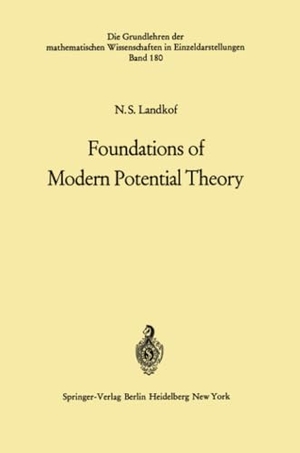
Naum S. Landkof
Foundations of Modern Potential Theory
- Springer Berlin Heidelberg
- 2011
- Taschenbuch
- 444 Seiten
- ISBN 9783642651854
For a long time potential theory was necessarily viewed as only another chapter of mathematical physics. Developing in close connection with the theory of boundary-value problems for the Laplace operator, it led to the creation of the mathematical apparatus of potentials of single and double layers; this was adequate for treating problems involving smooth boundaries. A. M. Lyapunov is to be credited with the rigorous analysis of the properties of potentials and the possibilities for applying them to the 1 solution of boundary-value problems. The results he obtained at the end of the 19th century later received a more detailed and sharpened exposition in the book
Mehr
Weniger
zzgl. Versand
in Kürze